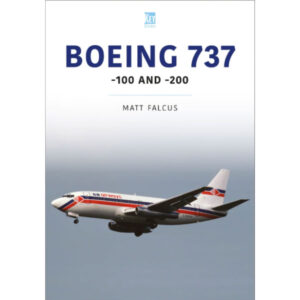Ryanair is one of the world’s largest airlines and a very successful low-cost carrier with bases across Europe. Yet this Irish airline had a very different start to life.
Founded in 1984 by Christopher Ryan and Liam Lonergan, Ryanair began by operating regional links between Ireland and the UK.
Its early fleet included a small number of types like the BAC 1-11, Embraer Bandeirante and Hawker Siddeley HS.748.
Low-Cost Transition
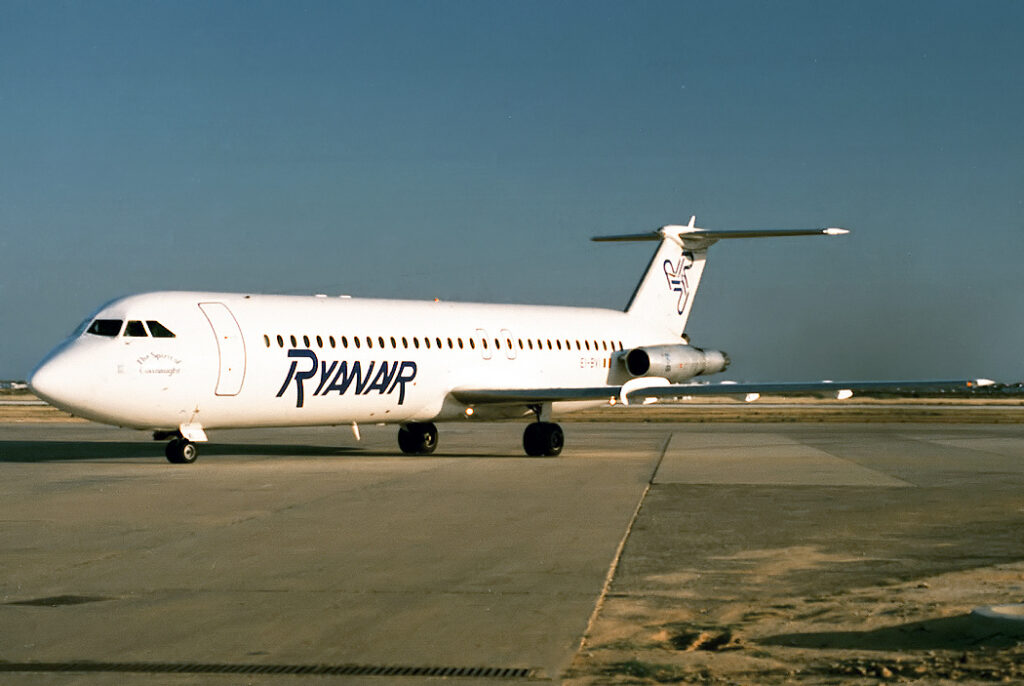
Pedro Aragão, CC BY-SA 3.0 GFDL, via Wikimedia Commons
Inspired by low-cost pioneer Southwest Airlines, in the early 1990s Ryanair began transitioning to this model. The deregulation of the aviation industry within the EU allowed airlines of member countries to operate within any other member country, which opened doors for Ryanair to expand and open up bases elsewhere.
It began flying out of hubs like Dublin and London Stansted and offering bargain basement fares with limited amenities and onboard services. Anything extra was charged for.
In order to become efficient and make money at this model, Ryanair moved to flying just a single type of aircraft – the Boeing 737-200.
With this 1960s era type coming towards the end of its useful life, many examples were available to acquire cheap. Perfect for this ambitious airline to built up capacity around a single jet type.
Ryanair purchased many examples from airlines like Britannia Airways and Lufthansa which were retiring them at the time, in favour of more modern types.
Ryanair 737-200 Operation
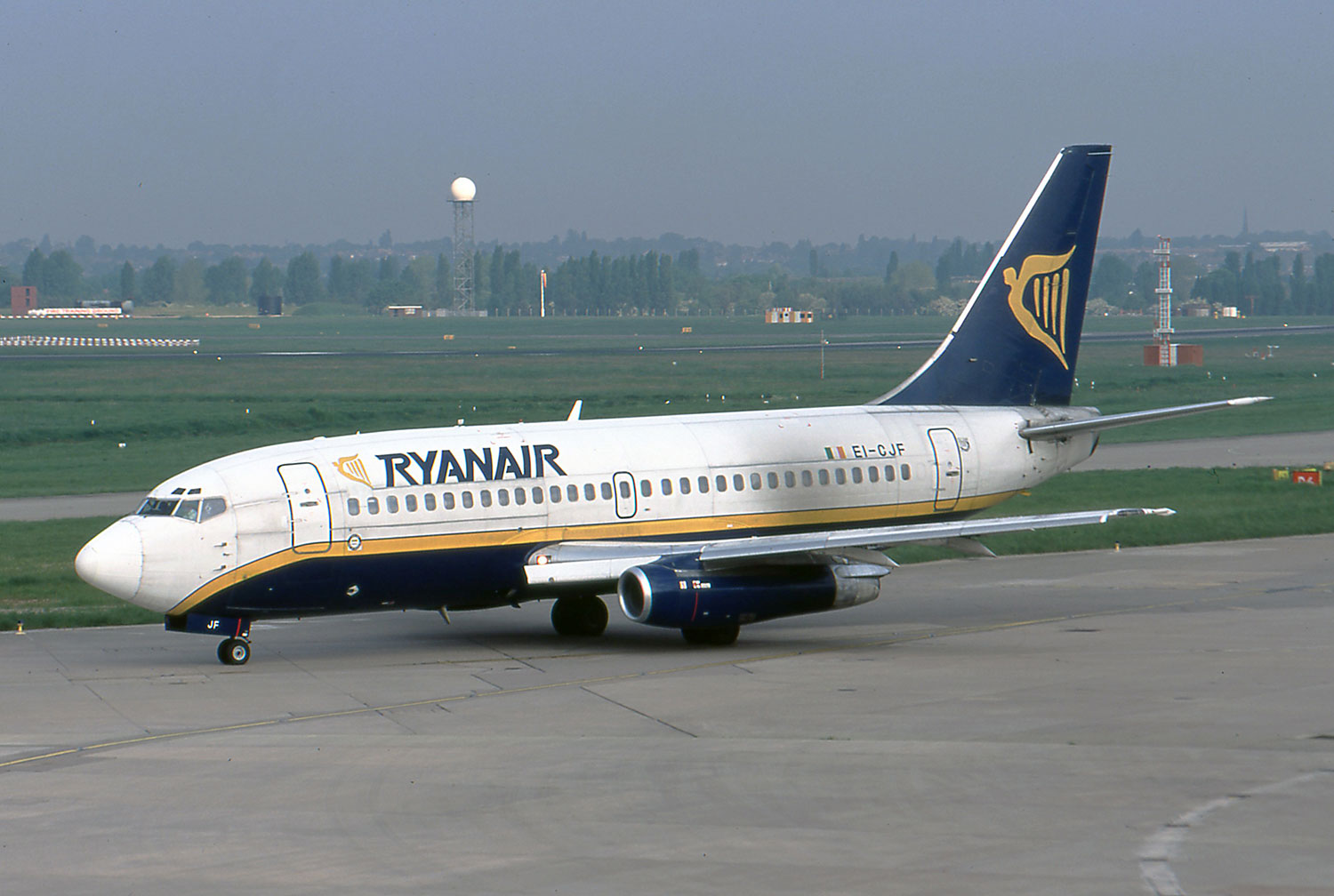
EI-CJF with Ryanair was formerly G-BTZF with Britannia.
With these early 737s, which still had sufficient airframe cycles remaining before needing to be retired, Ryanair was able to create a high utilisation rate on many short hopes around the UK, Ireland and into Europe. The move enabled the airline to become the giant of low-cost travel it is today.
Special Liveries
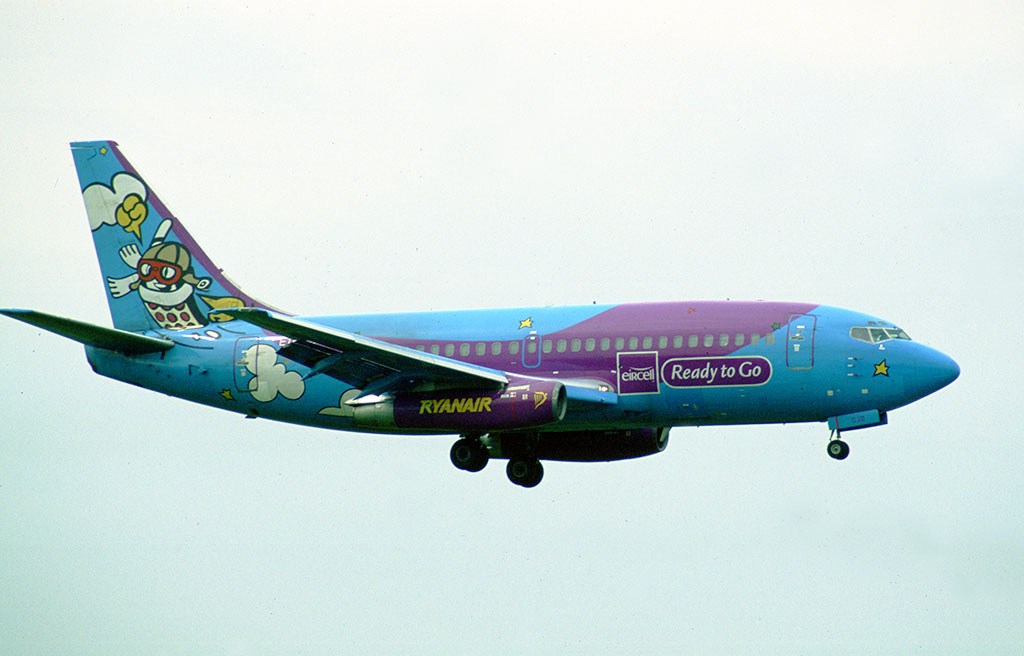
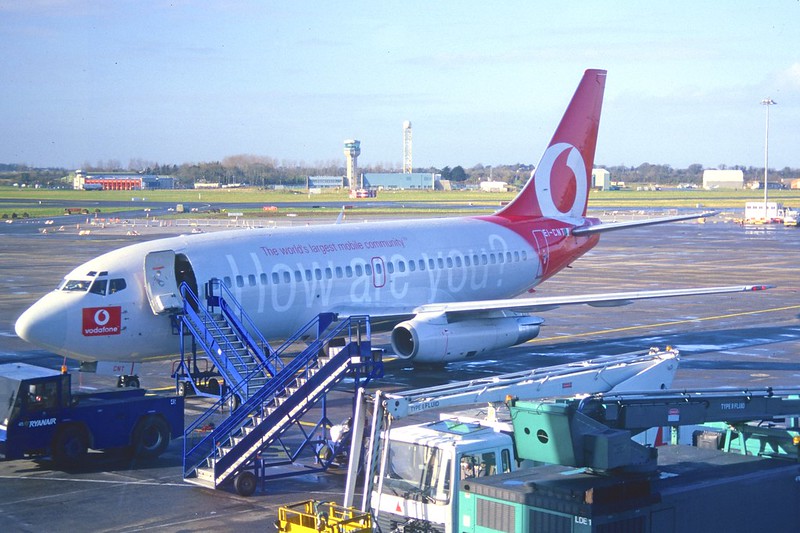
Vodafone livery (c) Aero Icarus
Ever on the lookout for moneymaking opportunities, Ryanair offered its 737-200s as flying billboards. As a result, a number of the aircraft flew as giant advertisements for companies like The Sun/News of the World, Eircell, Jaguar, Vodafone and Hertz.
Replacing the 737-200s
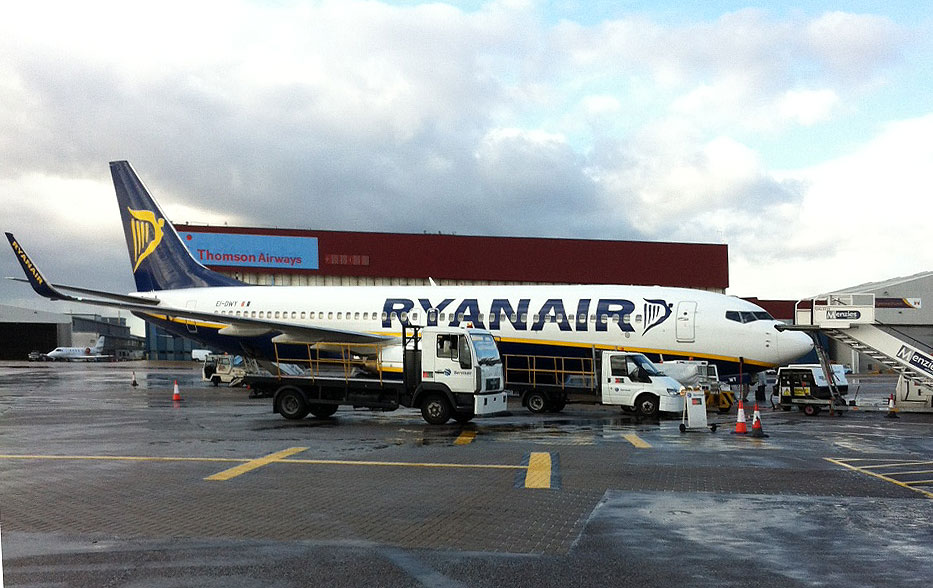
With the success of its low-cost operation, Ryanair was soon able to order a fleet of larger, newer Boeing 737-800s. It ordered 45 of the type in 1998.
As more were delivered, the older -200s were replaced, leaving the fleet entirely by 2005
Today, Ryanair has over 560 aircraft, comprising 737-800s and brand new 737 MAX 8-200s. It has over 200 additional aircraft on order.
Ryanair 737-200s Fleet and Status
- EI-CJC 737-204 [22640] – WFU Lima, Peru as OB-1839-P
- EI-CJD 737-204 [22966] – Scrapped 2022
- EI-CJE 737-204 [22639] – Scrapped. Nose preserved as a flight simulator
- EI-CJF 737-204 [22967] – Scrapped 2009
- EI-CJG 737-204 [22058] – Scrapped 2016
- EI-CJH 737-204 [22057] – Stored Ujung Pandang, Indonesia as PK-TXY
- EI-CJI 737-2E7 [22875] – Scrapped 2007
- EI-CKP 737-2K2 [22296] – Scrapped 2006
- EI-CKQ 737-2K2 [22906] – Scrapped 2018
- EI-CKR 737-2K2 [22025] – Fuselage preserved as cabin trainer, Oldham, UK
- EI-CKS 737-2T5 [22023] – Scrapped 2005
- EI-CNT 737-230 [22115] – Stored Ciudad Bolivar, Venezuela as YV379T
- EI-CNV 737-230 [22128] – Stored Ciudad Bolivar, Venezuela as YV390T
- EI-CNW 737-230 [22133] – Stored Lima, Peru as OB-1851-P
- EI-CNX 737-230 [22127] – WFU in Venezuela as YV380T
- EI-CNY 737-230 [22113] – Stored Ciudad Bolivar, Venezuela as YV369T
- EI-CNZ 737-230 [22126] – Stored Santiago, Chile as N126AD
- EI-COA 737-230 [22637] – Scrapped 2011
- EI-COB 737-230 [22124] – Stored Lima, Peru as YV475T
- EI-CON 737-2T5 [22396] – Scrapped 2011
- EI-COX 737-230 [22123] – Static de-icing testbed at Skein, Norway as ZS-EVE
 737-100 & -200 Book
737-100 & -200 Book
My new book, Boeing 737-100 and -200, charts the historic of this iconic aircraft type – the genesis of the Boeing 737 that is still one of the most popular and numerous aircraft types ever built.
The book is packed with over 150 colour photographs of airlines around the world flying these early 737-100 and -200 models.
Order Your Copy




